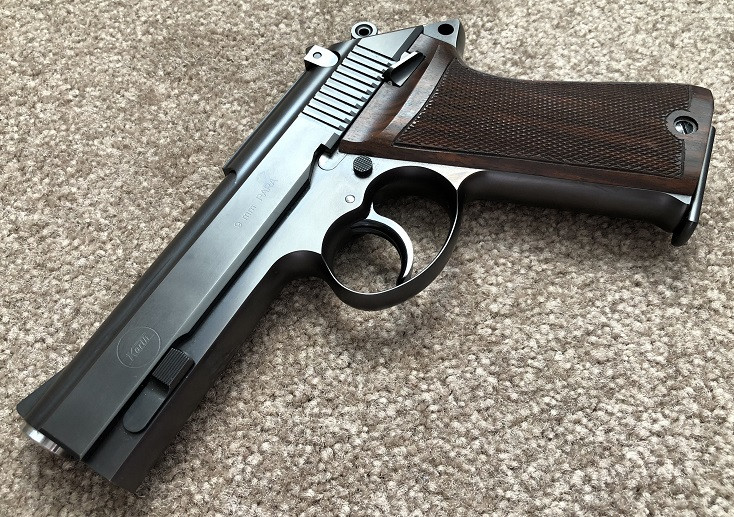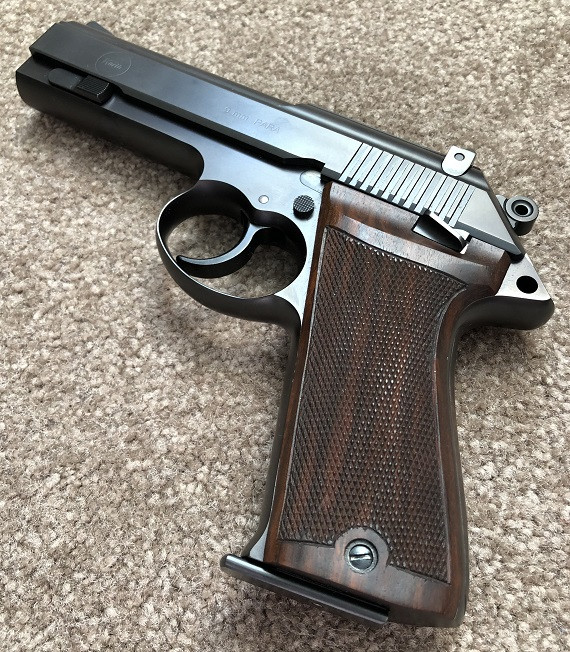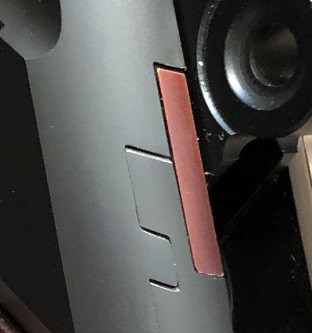The handguns of Willi Korth have been around since 1954. Founded in Ratzeburg, Germany, the company has always been known for exquisite refinement and outstanding build quality. The first revolvers were rather simple looking, but well made. The Korth Combat and Sport revolvers were introduced several years later and were truly a marvel of engineering and craftsmanship. It was during this time in the 1970’s and 80’s that Korth earned its reputation for building some of the finest handguns in the world. I’ve owned Korth Combat revolvers for a decade now and I’m still amazed just picking one up. If you want the world’s nicest wheelgun, look no further than a 1970’s Korth.
Having said all that, the subject of my thread isn’t a revolver. By the mid 1980’s, Willi started to look “outside the box”. In 1988 an automatic pistol of his own design was introduced. Simply called the Korth Autopistol or just Korth Pistol, this gun was, not surprisingly, build to incredibly high standards of excellence. The design is that of a falling block taken from the Walther P38 and later the Beretta 92. Korth did it a bit differently, however. The falling block is up front by the muzzle and certainly unique in its design and appearance. Supposedly, Korth designed it in that fashion to moderate recoil. The basic configuration is DA/SA and it has a super smooth, but fairly long DA pull. Personally, I was never in love with this pistol’s design or its high bore axis, but being that the gun has so much prowess in other ways, its easily forgivable.
Speaking of prowess, all parts are cut from high grade carbon steel and fitted to tight tolerances. The fit and finish is immaculate and its really a work of art as much as it is a firearm. These pistols were completely hand built in very limited quantities. The Korth Autopistol was produced on and off for over 15 years. Less than 300 examples were made. The bluing on the early models was very matte, but even. The frames have started to take on a bit of a plum color over the years. Later finishes could be optioned very extravagantly, to include plasma of various colors, gold accents, etc, etc. Being conservative like I am, I prefer the old bluing the best. The checkered walnut grips are beautiful and the wood inlay on the back strap in a very nice touch. The magazines are extremely well made and they put many of my entire handguns to shame. They remind me of the old Sig P210 magazines before they were zippered up the back. The inside workings of the gun show the same phenomenal attention to detail. It shows the great pride Willi Korth took in his craft. I tried to capture the level of craftsmanship in the pictures, but it’s the sort of gun that has to be seen in person to fully appreciate. The machining is just otherworldly in its precision and accuracy.
My overall feelings on the Korth Pistol are somewhat mixed. I think it was certainly one of the finest handguns ever made in Germany or anywhere in the world for that matter. Its attention to detail and level of quality and craftsmanship is matched by very, very few other handguns. I’m not in love with the design, as mentioned above. While it shoots decently enough, I don’t feel the design lends itself to great accuracy and I don’t care for the ergonomics at all. I guess that’s part of the gun’s charm though. It exudes exoticism and looks like no other handgun. At 43oz unloaded, the Korth Pistol is hefty, just the way I like high end handguns. Its pure class all the way, just don’t expect it to hold its own against something like a Sig P210 or Smith & Wesson 952 on a test target.
This example is a first year model, stamped “JJ” for 1988 and displays the very low serial number 24. It has been told to me from a couple sources that Willi built these early pistols himself. Whether or not that’s true, I have no idea. However, I would venture to say that he had a big hand in their production. Condition is flawless and I’m told its unfired outside the factory. After checking it over, I believe that to be the case. Its complete with the box and manual. The box is numbered to the gun. The manual is entirely in German. Caliber is 9mm, as were all the early guns. Later models were chambered in 40S&W and even 357 Sig, but I wouldn’t want the gun in any caliber other than this one.
I have had one from 1989 (serial number 122) for several years now. This latest model is identical other than the rounded trigger guard. For whatever reason, Korth offered them both ways and I now own one of each. I’m not sure which look I like better, but it definitely gives the entire pistol a different appearance.
I guess I’ll stop rambling on and on. Does anyone here have experience with this handgun? If so, what’s your opinion?
Thanks for reading. Please enjoy the pics and share your thoughts.











Here it is with my 1989 model (#122). Note the difference in the trigger guard as well as the color of the walnut grips.


Here they are with my two Korth Combat revolvers from 1976 and 1985…









































